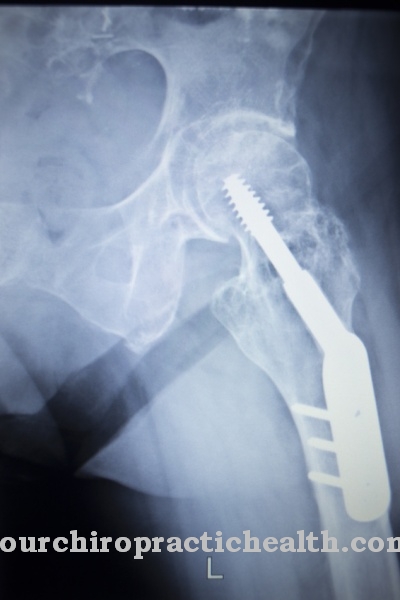A Rhinoplasty is a surgical procedure intended to correct or change the external appearance of the human nose. The operation is carried out at the patient's request or after an illness or injury that has resulted in an undesirable appearance of the nose. Rhinoplasty can therefore fall under the category of cosmetic surgery, but does not necessarily have to be.
What is a nose job?

Under the term of Rhinoplasty, called rhinoplasty in technical terms, experts understand a surgical procedure to correct or change the appearance of a human nose.
With their help, congenital malformations or abnormalities such as B. a hump nose can be compensated. In the same way, malformations or distortions caused by accidents or illnesses are eliminated with the help of a nose correction if possible. Smaller corrections, for example of the nostrils or the tip of the nose, are also possible - such interventions then fall into the field of cosmetic surgery.
Modern rhinoplasty can be traced back to Jacques Joseph, who tried his methods on soldiers during World War I. Nowadays there are different approaches to performing a rhinoplasty, all of which are similar in that they leave behind as few visible marks as possible and thus not impair the patient's appearance after the operation.
Function, effect & goals
A Rhinoplasty is carried out when the appearance of the nose is very different from the norm, thus interfering with the patient's daily life. This can be the case, for example, if the nose has been deformed by an injury or a serious illness.
Congenital malformations or abnormalities can also lead to the person affected being exposed to severe psychological stress in everyday life. With the help of a rhinoplasty, not only does the patient's appearance change, but also an increase in their self-confidence is often achieved. The exact procedure for rhinoplasty depends on the type of change that the nose has. Many abnormalities such as hump or saddle noses can be eliminated endonasally.
All necessary cuts are made inside the nose - there is no optically visible scarring with this method, which is very pleasant for the patient. Nose reductions can also be performed in this way. If there are larger or more complicated interventions, such as a nose construction, an endonasal procedure is not possible. Here the skin of the tip of the nose and nostrils must be lifted so that the surgeon can reach the affected area sufficiently.
To do this, a small incision is made between the upper lip and the bridge of the nose, which later leaves a small visible scar. In the case of a nose build-up, the body's own cartilage is removed from the ear or ribs, for example, in order to form a nose that is as natural as possible. Rhinoplasty can be performed on an inpatient or outpatient basis, depending on the severity of the procedure and the patient's state of health. A special nose bandage must then be worn for about two weeks. The healing phase takes about two weeks. During this time, the patient is only partially resilient and socially acceptable.
Risks, side effects & dangers
Every operation, so too Rhinoplasty, entails certain risks that must be considered before the procedure and discussed with the person concerned. The patient's health must be thoroughly examined, as well as the medical history.
In this way, unnecessary complications, such as those caused by anesthesia, can be avoided. Immediately after the procedure, there is swelling, bruising and pain in the nose area. Sometimes these can be accompanied by sensory disturbances in the face. Usually these symptoms subside after a few days. Long-term studies have shown that, after a nose correction, it is not uncommon for an unforeseeable, undesired change in the nose to occur in the long term, which can make a second operation necessary.
According to statistics, up to 40% of all corrected noses are said to be affected by such a change. If there is excessive scarring inside the nose, bumps and / or swellings can develop in the affected area, which are visible from the outside. According to experts, the best results from rhinoplasty are found in people of young age (up to about 30 years of age).



.jpg)





.jpg)



.jpg)



.jpg)







.jpg)


